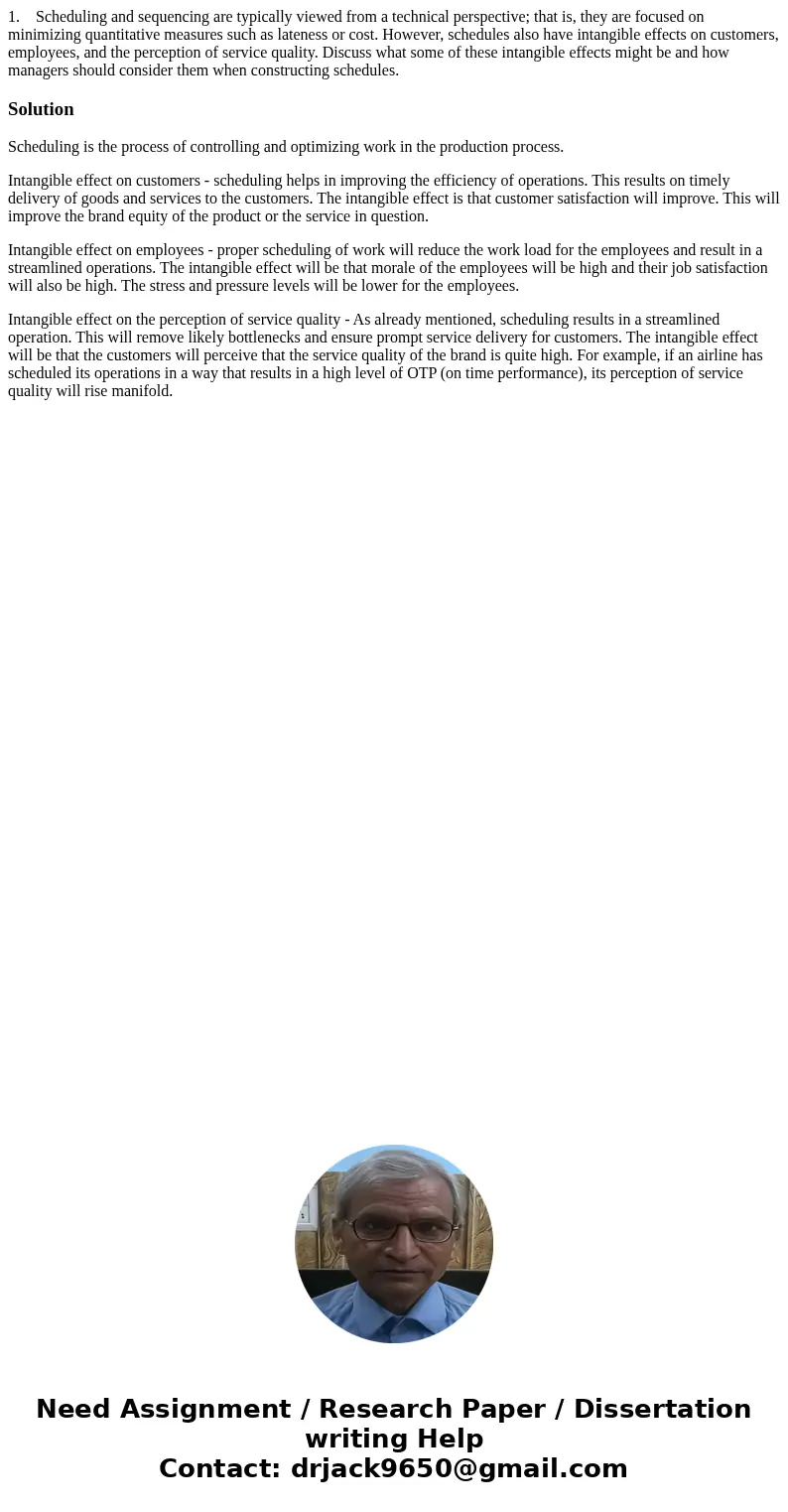1 Scheduling and sequencing are typically viewed from a tech
1. Scheduling and sequencing are typically viewed from a technical perspective; that is, they are focused on minimizing quantitative measures such as lateness or cost. However, schedules also have intangible effects on customers, employees, and the perception of service quality. Discuss what some of these intangible effects might be and how managers should consider them when constructing schedules.
Solution
Scheduling is the process of controlling and optimizing work in the production process.
Intangible effect on customers - scheduling helps in improving the efficiency of operations. This results on timely delivery of goods and services to the customers. The intangible effect is that customer satisfaction will improve. This will improve the brand equity of the product or the service in question.
Intangible effect on employees - proper scheduling of work will reduce the work load for the employees and result in a streamlined operations. The intangible effect will be that morale of the employees will be high and their job satisfaction will also be high. The stress and pressure levels will be lower for the employees.
Intangible effect on the perception of service quality - As already mentioned, scheduling results in a streamlined operation. This will remove likely bottlenecks and ensure prompt service delivery for customers. The intangible effect will be that the customers will perceive that the service quality of the brand is quite high. For example, if an airline has scheduled its operations in a way that results in a high level of OTP (on time performance), its perception of service quality will rise manifold.

 Homework Sourse
Homework Sourse